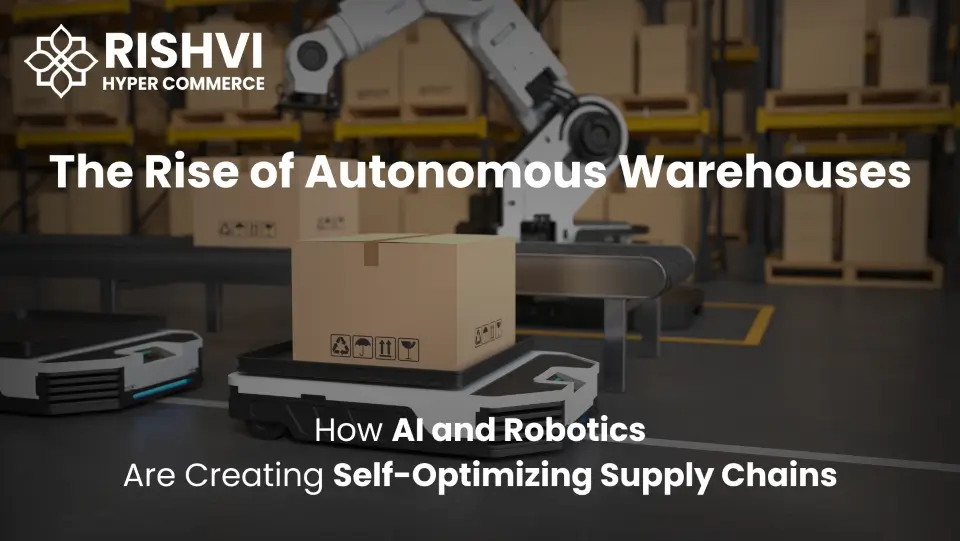
Warehousing has always been at the core of supply chain operations. It is where goods are stored, sorted, packed, and shipped to meet customer demand. In recent years the pressure on warehouses has increased with the growth of e-commerce, the need for faster deliveries, and higher customer expectations. Traditional warehouses that depend on manual labor and basic automation often struggle to keep up. To address this challenge, businesses are turning to autonomous warehouses that rely on artificial intelligence and robotics to manage operations with minimal human intervention. These new systems are reshaping how supply chains function by creating self-optimizing processes.
Autonomous warehouses are facilities that rely on machines and software to carry out most daily activities. Instead of workers manually moving goods, robots handle tasks such as picking, packing, and transporting items. Artificial intelligence systems monitor inventory, predict demand, and adjust workflows in real time. The combination of robotics and AI reduces errors, speeds up operations, and lowers costs. This shift is not about replacing people entirely but about creating smarter workflows where humans and machines work together.
Artificial intelligence plays a central role in autonomous warehouses. It processes vast amounts of data from sensors, orders, and customer behavior. With this data AI can predict which products are likely to be ordered, when stock needs replenishing, and how best to route goods through the warehouse. Robotics complements this intelligence by carrying out physical tasks. Automated guided vehicles and autonomous mobile robots move goods across storage zones, while robotic arms handle picking and packing with precision. Together these systems ensure goods flow through warehouses with minimal delays.
The benefits of autonomous warehouses are clear. First, they improve speed. Robots work round the clock without fatigue and AI systems make decisions in seconds. Second, they reduce errors. Manual picking errors often lead to incorrect shipments and unhappy customers. AI-powered systems match orders with inventory more accurately. Third, they create cost savings. While initial investments are high, long-term savings come from reduced labor costs, lower error rates, and improved space utilization. Finally, autonomous warehouses increase flexibility. When demand spikes during holiday seasons or promotional sales, AI-driven systems adapt quickly without the need for large temporary workforces.
There are several examples of autonomous warehouses in action. Amazon has deployed thousands of robots across its fulfillment centers worldwide. These robots bring entire shelves to workers, reducing the time required to pick items. Ocado, a British online grocer, runs warehouses where robots move in grids to collect grocery items with minimal human involvement. Logistics providers such as DHL are testing AI-driven robotics for order picking and inventory management. These real-world applications show how automation has moved from theory to practice.
AI-driven forecasting is another critical part of autonomous warehouses. Traditional forecasting often relies on historical sales data, which fails to account for sudden changes in demand. AI systems learn from multiple variables such as seasonality, promotions, and customer buying patterns. With this information they create accurate predictions that help warehouses maintain the right stock levels. For example, if data shows rising demand for a specific product in one region, AI systems can redirect inventory from another location to avoid shortages. This reduces both stockouts and overstock situations.
Inventory optimization is also enhanced in autonomous warehouses. AI systems track product movement in real time, identify slow-moving goods, and suggest reallocation strategies. Robotics ensures that goods are stored in the most efficient way possible, reducing wasted space and making retrieval faster. For businesses handling perishable items such as food or medicine, this capability helps reduce waste by ensuring items are shipped before expiration.
Safety is another area where autonomous warehouses bring value. Human workers face risks from heavy lifting, repetitive strain, and accidents in busy storage areas. By assigning these tasks to robots, companies create safer workplaces. AI systems can monitor conditions in real time, such as temperature in cold storage warehouses, and trigger alerts before issues escalate. Workers then focus on oversight, maintenance, and more strategic tasks rather than manual labor.
The technology behind autonomous warehouses continues to advance. Robotics is becoming more versatile with improvements in vision systems and dexterity, allowing machines to handle a wider range of products. AI algorithms are becoming more accurate as they learn from larger datasets. Integration with Internet of Things devices provides real-time updates on equipment health, product conditions, and warehouse performance. These technologies combine to make supply chains more responsive and reliable.
Despite the progress, challenges remain. The cost of setting up autonomous warehouses is high, which can be difficult for smaller businesses. Integration with existing systems can also be complex, especially when companies still depend on outdated warehouse management software. Data quality is another issue. AI systems require accurate and consistent data to function well. Without proper data governance, predictions and decisions can be flawed. Workforce adaptation is also critical. Employees need training to work alongside machines, manage AI systems, and handle new roles created by automation.
The long-term outlook for autonomous warehouses is promising. As technology costs decrease, adoption will spread beyond large corporations to mid-sized businesses. Advances in robotics will allow warehouses to handle more diverse tasks. AI will evolve from predictive to prescriptive analytics, not only forecasting demand but also recommending the best actions to take. Sustainability will also play a growing role. Autonomous systems can reduce energy consumption by optimizing equipment use and lowering waste through smarter inventory management.
For businesses, moving toward autonomous warehouses is not only about efficiency. It is about creating supply chains that respond quickly to customer needs, adapt to market changes, and operate with greater resilience. The rise of autonomous warehouses represents a shift in how goods are stored and delivered. Those who invest in AI and robotics today position themselves for stronger competitiveness tomorrow. Connect for more!


